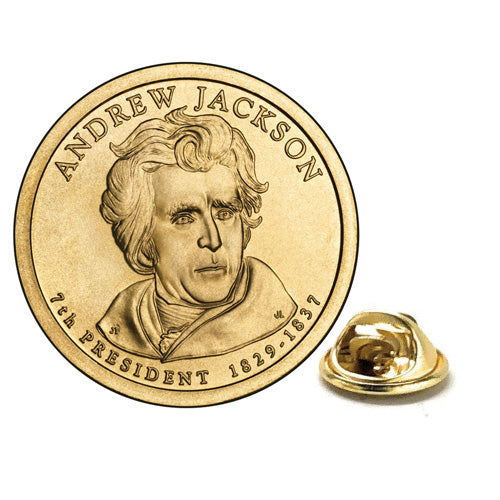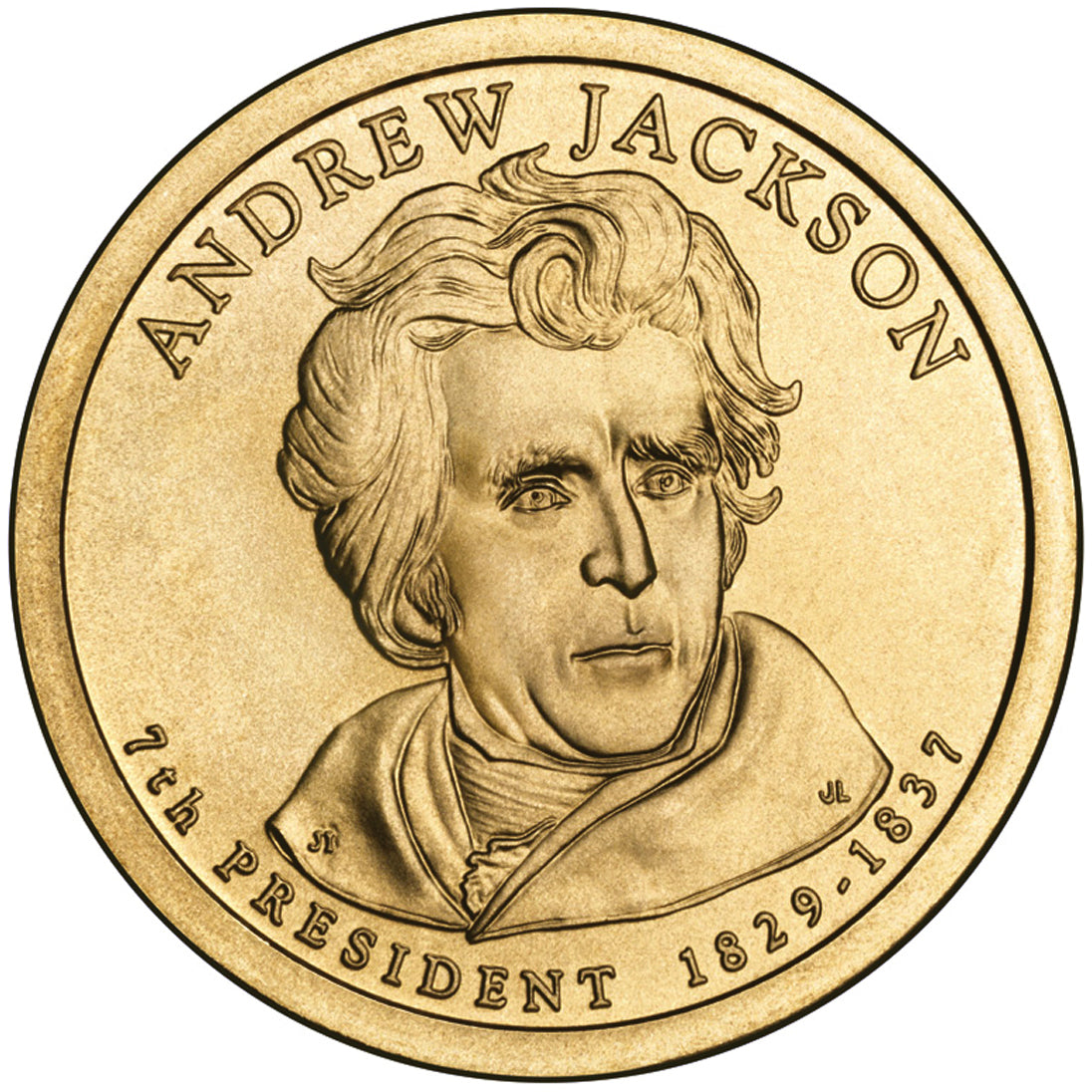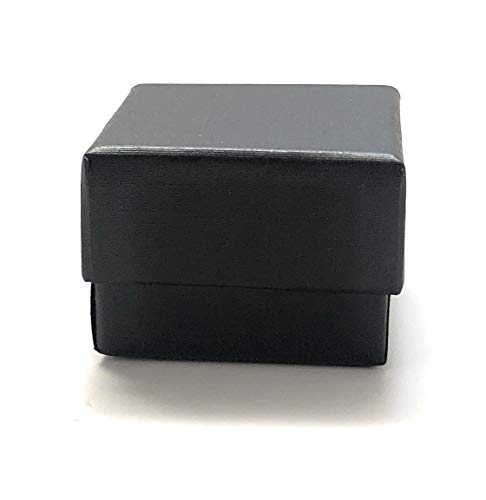1
/
of
4
Jay Pins
Andrew Jackson Presidential Dollar Lapel Pin, Uncirculated One Gold Dollar Coin Enamel Pin
Andrew Jackson Presidential Dollar Lapel Pin, Uncirculated One Gold Dollar Coin Enamel Pin
Regular price
$17.88 USD
Regular price
Sale price
$17.88 USD
Unit price
/
per
Shipping calculated at checkout.
Couldn't load pickup availability
Coin Collecting Enamel Pin and Lapel Pin are a great way to show off your Love of Rare Coins. A lot of People Collect Pins Badges and Custom Pins. We have a great selection of Retro Pins, acrylic Pins and one piece enamel pin. Lapel Pins are very popular for Weddings and other events. Enamel Pin Sets are so fun to collect make sure to check out our whole store for your coin collector hobby.
Approximately .80" in diameter
Authentic Uncirculated USA Coins
Hand Crafted by Artisan in the USA
Rhodium Plated Gold Butterfly Clasp Backing
Presidential $1 Coin Program
Presidential dollar coins began on January 1, 2007, and like the 50 State quarters program, was not scheduled to end until every eligible subject was honored. The program was to issue coins featuring each of four presidents per year on the obverse, issuing one for three months before moving on to the next president in chronological order by term in office. To be eligible, a President must have been deceased for at least two years prior to the time of minting. The United States Mint called it the Presidential $1 Coin Program.
Background
A citizen of Tennessee, Andrew Jackson was the first president elected from west of the Appalachian Mountains. As a boy, he fought in the Revolutionary War. Jackson gained national prominence as a hero of the War of 1812, and was nicknamed “Old Hickory” for his firm discipline as commander of his troops.
As president, Jackson worked to strengthen the executive branch and vetoed more bills than the six prior presidents combined. His renomination to a second term marked the first use of a national nominating convention to select a party’s candidate instead of a congressional caucus.
A strong proponent of federal supremacy over states’ rights, he took a forceful stance against the state of South Carolina’s attempt to nullify a federal tariff, declaring “Our federal Union: it must be preserved.”
President Jackson authorized three southern branches of the United States Mint in 1835 – New Orleans, Charlotte, and Dahlonega.
Coinage Legislation under President Andrew Jackson
Act of June 25, 1834 — This Act regulates the legal-tender value of certain foreign silver coins.
Act of June 28, 1834 — This Act regulates the legal-tender value of certain foreign gold coins.
Act of June 28, 1834 — This Act sets the standard weight of U.S. gold coins, sets the standard for payment for gold or silver deposited for coinage, sets the rate at which gold coins shall be receivable, and directs the setting apart of gold coins for assay.
Act of March 3, 1835 — This Act establishes a branch of the United States Mint for the coinage of silver and gold at New Orleans, Louisiana, and branches for the coinage of gold at Charlotte, North Carolina and Dahlonega, Georgia.
Act of January 18, 1837 — This Act:
sets forth the duties and increases the salaries of the officers of the United States Mint, with the Director earning $3,500 per year including travel expenses;
sets forth the composition and weight of gold and silver coins;
mandates that each coin struck at the United States Mint shall have on one side an impression emblematic of liberty with an inscription of the word “Liberty” and the year of the coinage; and that the reverse of gold and silver coins shall have the representation of an eagle with the inscription “United States of America.” The figure of the eagle shall be omitted from the reverse of the dime, half dime, cent, and half cent;
makes provisions for gold and silver bullion that is brought to the Mint for coinage.
United States Mint Directors appointed by President Jackson
1835 Robert Maskell Patterson, M.D — Sixth Director of the United States Mint
Approximately .80" in diameter
Authentic Uncirculated USA Coins
Hand Crafted by Artisan in the USA
Rhodium Plated Gold Butterfly Clasp Backing
Presidential $1 Coin Program
Presidential dollar coins began on January 1, 2007, and like the 50 State quarters program, was not scheduled to end until every eligible subject was honored. The program was to issue coins featuring each of four presidents per year on the obverse, issuing one for three months before moving on to the next president in chronological order by term in office. To be eligible, a President must have been deceased for at least two years prior to the time of minting. The United States Mint called it the Presidential $1 Coin Program.
Background
A citizen of Tennessee, Andrew Jackson was the first president elected from west of the Appalachian Mountains. As a boy, he fought in the Revolutionary War. Jackson gained national prominence as a hero of the War of 1812, and was nicknamed “Old Hickory” for his firm discipline as commander of his troops.
As president, Jackson worked to strengthen the executive branch and vetoed more bills than the six prior presidents combined. His renomination to a second term marked the first use of a national nominating convention to select a party’s candidate instead of a congressional caucus.
A strong proponent of federal supremacy over states’ rights, he took a forceful stance against the state of South Carolina’s attempt to nullify a federal tariff, declaring “Our federal Union: it must be preserved.”
President Jackson authorized three southern branches of the United States Mint in 1835 – New Orleans, Charlotte, and Dahlonega.
Coinage Legislation under President Andrew Jackson
Act of June 25, 1834 — This Act regulates the legal-tender value of certain foreign silver coins.
Act of June 28, 1834 — This Act regulates the legal-tender value of certain foreign gold coins.
Act of June 28, 1834 — This Act sets the standard weight of U.S. gold coins, sets the standard for payment for gold or silver deposited for coinage, sets the rate at which gold coins shall be receivable, and directs the setting apart of gold coins for assay.
Act of March 3, 1835 — This Act establishes a branch of the United States Mint for the coinage of silver and gold at New Orleans, Louisiana, and branches for the coinage of gold at Charlotte, North Carolina and Dahlonega, Georgia.
Act of January 18, 1837 — This Act:
sets forth the duties and increases the salaries of the officers of the United States Mint, with the Director earning $3,500 per year including travel expenses;
sets forth the composition and weight of gold and silver coins;
mandates that each coin struck at the United States Mint shall have on one side an impression emblematic of liberty with an inscription of the word “Liberty” and the year of the coinage; and that the reverse of gold and silver coins shall have the representation of an eagle with the inscription “United States of America.” The figure of the eagle shall be omitted from the reverse of the dime, half dime, cent, and half cent;
makes provisions for gold and silver bullion that is brought to the Mint for coinage.
United States Mint Directors appointed by President Jackson
1835 Robert Maskell Patterson, M.D — Sixth Director of the United States Mint
Share








